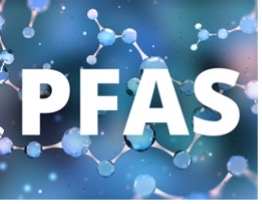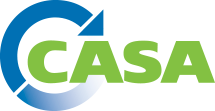President Biden Transmits Fiscal Year 2022 Budget
President Biden transmitted the formal budget request for fiscal year (FY) 2022 to Congress last month, which marks the formal start of the congressional FY2022 appropriations cycle. Finalization and transmission of the budget request were delayed by a month due to the Presidential Transition, development of annual spending priorities alongside the implementation of the American Rescue Plan, securing Senate confirmation of political appointees, and development of the American Jobs Act. As a result, Congress will work overtime in the coming months to develop, consider and vote on appropriations bills before the next fiscal year begins on October 1.
In brief, the Administration is proposing to increase total spending to $6 trillion. However, it will be up to Congress on whether to enact the spending levels proposed by the budget request. The House and Senate Committees on Appropriations will begin the process in earnest this week hearing from agency leadership on the request’s funding proposals and statements by party leadership to start markups of spending bills by the end of the month.
Throughout the budget request, there is a major theme of providing and increasing funding for environmental justice initiatives and addressing environmental protection concerns. Under the budget request, the U.S. Environmental Protection Agency (USEPA) would receive a total of $11.2 billion, representing an increase of $2 billion increase from FY2021 enacted levels, and requests increases for key water assistance programs. This includes an increase for the Clean Water State Revolving Loan Fund to $1,870,680,000 from the current $1.6 billion and an increase for the WIFIA Program to $72,108,000, with $8 million to cover the program’s administrative expenses. The U.S. Bureau of Reclamation (USBR) would see a slight decrease in overall funding to $1.5 billion. This represents a decrease of $137.1 million from FY2021 enacted level. Under the FY2022 budget request, the Bureau’s WaterSMART program would receive $54.1 million, of which $15 million would go to Basin Studies, $4.5 million to Title XVI, Water Conservation Field Services $2.3 million, and the Drought Response program would receive $16.5 million.
A detailed summary of the USEPA’s requested programmatic spending levels can be found here. A detailed summary of USBR’s requested programmatic spending levels can be found here.
House Committee Considers Clean Water Infrastructure Investment Legislation
 Today, the House Committee on Transportation and Infrastructure will mark-up H.R. 1915, the Water Quality Protection and Job Creation Act of 2021. H.R. 1915 is a comprehensive investment package that supports improving clean water infrastructure systems, enhance the resiliency of publicly owned treatment works (POTWs), and improve water quality. If approved and reported out to the committee, the bill will go to the House floor for consideration and a vote. Last week, the committee published a press release promoting H.R. 1915 ahead of the markup and quoted CASA’s support for the legislation among a diverse group of stakeholders. The statement, which is quoted below, was taken from a support letter CASA transmitted to the committee for H.R. 1915 last month.
Today, the House Committee on Transportation and Infrastructure will mark-up H.R. 1915, the Water Quality Protection and Job Creation Act of 2021. H.R. 1915 is a comprehensive investment package that supports improving clean water infrastructure systems, enhance the resiliency of publicly owned treatment works (POTWs), and improve water quality. If approved and reported out to the committee, the bill will go to the House floor for consideration and a vote. Last week, the committee published a press release promoting H.R. 1915 ahead of the markup and quoted CASA’s support for the legislation among a diverse group of stakeholders. The statement, which is quoted below, was taken from a support letter CASA transmitted to the committee for H.R. 1915 last month.
CASA continues to support the federal commitment to renew the Clean Water Act SRF program at a record level of $40 billion. This support is vital to help close the funding gap recently illustrated by the American Society of Civil Engineers’ Infrastructure Report Card. We also endorse funding to assist clean water agencies address the control of PFAS and other “forever” chemicals with financial assistance for pretreatment programs.
Among the H.R. 1915’s provisions is a section to help municipalities implement and incorporate smarter water technology. CASA has supported this smart water initiative last Congress and continues to support it this Congress. The section establishes a U.S. Environmental Protection Agency (USEPA) grants program to assist municipalities in the planning, designing, or constructing of projects at POTWs that include intelligent sewage or stormwater collection systems that incorporate technologies that rely upon real-time monitoring, embedded intelligence and predictive maintenance capabilities that improve energy efficiency, reliability, and resiliency of POTW, or use artificial intelligence tools that reduce operational costs, including costs relating to energy consumption and chemical treatment, and, or, innovative and alternative combined storm and sanitary sewer projects that rely upon real-time data acquisition to support predictive aquifer recharge through reuse and stormwater management capabilities. USEPA is to issue guidance to municipalities on how to apply for a grant within 30 days. When determining whether to award a grant, USEPA will consider potential positive effects the project would have on water quality. The grants program is authorized at $500 million.
Other key elements of H.R. 1915 include:
- Authorizes $40 billion over 5 years for the Clean Water SRF
- Authorizes $500 million for each of the fiscal years 2022-2026 for state water management programs
- Authorizes $200 million for each of the fiscal years 2022-2026 for a new grants program to POTW owners to be used for implementing pretreatment standard or effluent limitation developed by USEPA for the introduction of PFAS into treatment works, or discharge of PFAS
- Authorizes $200 million for each of the fiscal years 2022-2026 to support efforts to assess future risks and vulnerabilities of POTWs to manmade or natural disasters, including extreme weather events, drought, and sea-level rise, and efforts to carry out planning, design, or construction of projects to increase the resiliency of POTWs
- Authorizes $200 million for each of the fiscal years 2022-2026 to support pilot projects addressing alternative water sources, including treating wastewater (including stormwater) for groundwater recharge, potable reuse, or other purposes
- Establishment of a Water Reuse Interagency Working Group to develop and coordinate actions, tools, and resources that encourage water reuse nationally
Lawmakers Reintroduce Clean Water Act PFAS Legislation
 Senator Kristen Gillibrand (D-NY) and Representatives Chris Pappas (D-NH) and Antonio Delgado (D-NY) have reintroduced legislation to address and treat PFAS under the Clean Water Act. The bill, entitled Clean Water Standards for PFAS Act (H.R. 3622/S.1907), requires the U.S. Environmental Protection Agency (USEPA) to develop effluent limitations guidelines and standards and water quality criteria for PFAS under the Federal Water Pollution Control Act and provide Federal grants to publicly owned treatment works to implement such guidelines and standards. In Gillibrand’s press release announcing the bill’s introduction, it states that the purpose of the legislation is to stop manufacturers and industries that use or make PFAS discharge the chemicals into the nation’s waterways and provide financial assistance to POTWs for treatment costs associated with the new limits and standards. Similar provisions were included in H.R. 2467, the PFAS Action Act of 2021, which was introduced earlier this year.
Senator Kristen Gillibrand (D-NY) and Representatives Chris Pappas (D-NH) and Antonio Delgado (D-NY) have reintroduced legislation to address and treat PFAS under the Clean Water Act. The bill, entitled Clean Water Standards for PFAS Act (H.R. 3622/S.1907), requires the U.S. Environmental Protection Agency (USEPA) to develop effluent limitations guidelines and standards and water quality criteria for PFAS under the Federal Water Pollution Control Act and provide Federal grants to publicly owned treatment works to implement such guidelines and standards. In Gillibrand’s press release announcing the bill’s introduction, it states that the purpose of the legislation is to stop manufacturers and industries that use or make PFAS discharge the chemicals into the nation’s waterways and provide financial assistance to POTWs for treatment costs associated with the new limits and standards. Similar provisions were included in H.R. 2467, the PFAS Action Act of 2021, which was introduced earlier this year.
Specifically, the Clean Water Standards for PFAS Act would do the following:
- Require USEPA to develop water quality criteria under the Clean Water Act for all measurable PFAS chemicals within two years of bill’s enactment and develop effluent limitations guidelines and standards for all measurable PFAS chemicals within four years, including establishing pretreatment standards to prevent the introduction of PFAS into POTWs and stopping PFAS at the source prior to contaminating municipal water systems.
- Identifies nine priority industry categories of industries that USEPA must establish standards for.
- Authorizes $200 million in grants per year through fiscal years 2022-2026 to assist POTWs with the implementation of developed limitations and standards.




 @CASA_CleanWater
@CASA_CleanWater